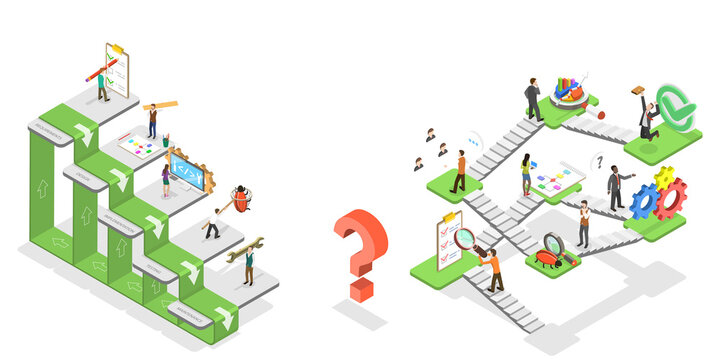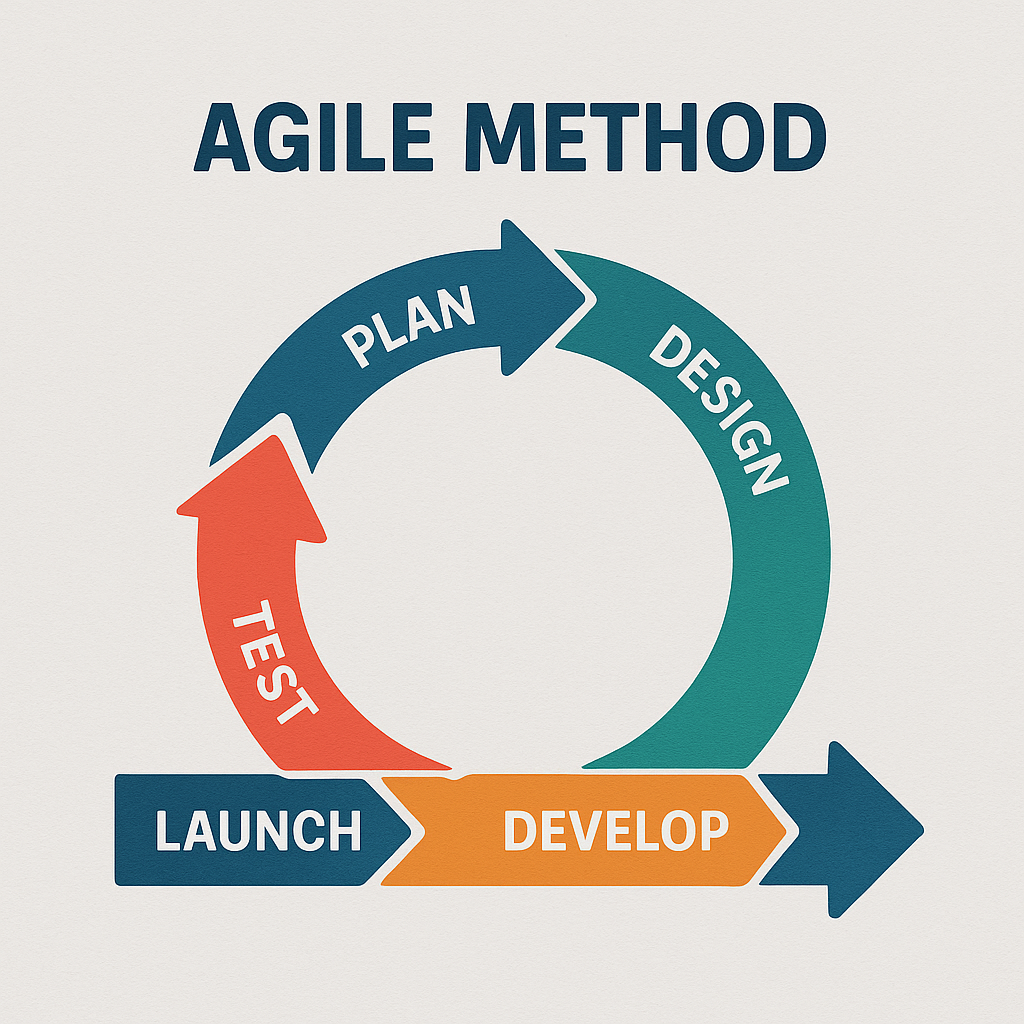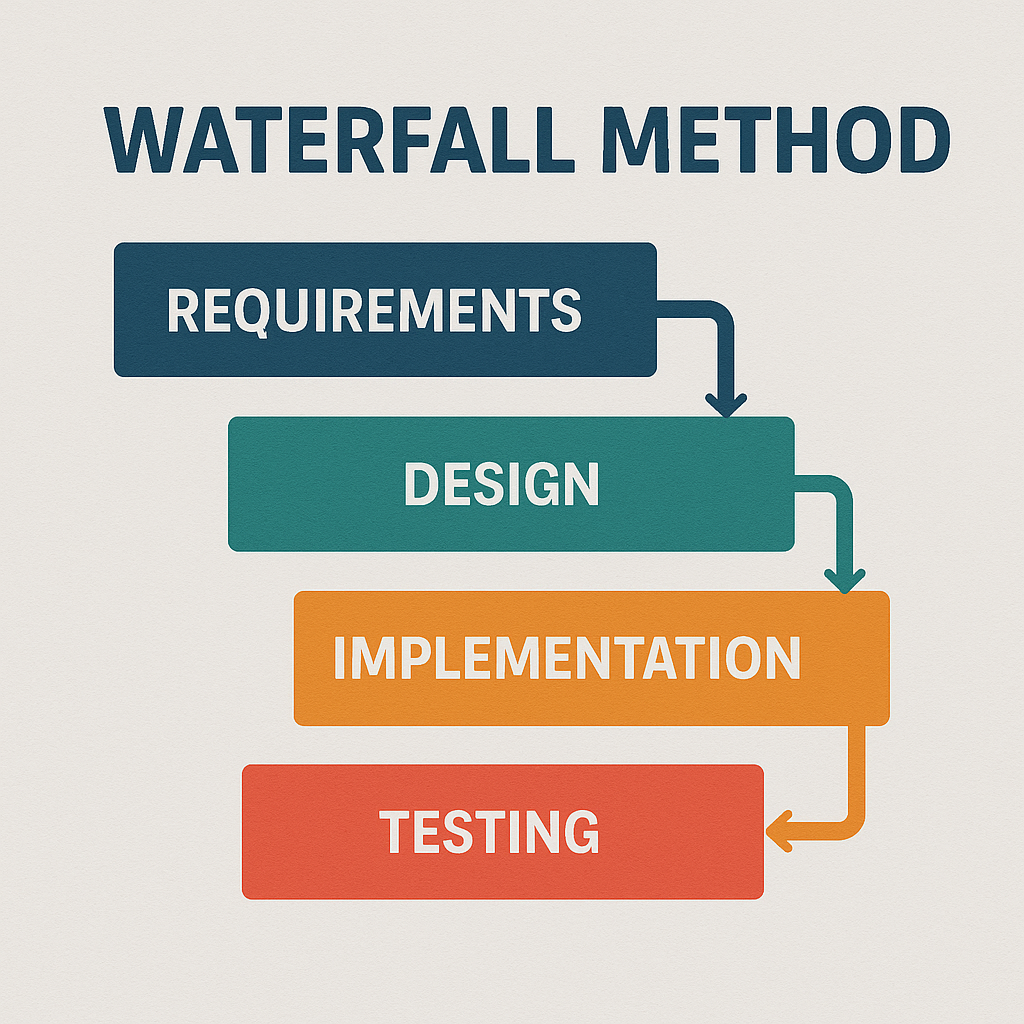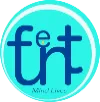Agile & Waterfall: Understanding Their Core Differences

WebCoder

Agile vs Waterfall
Agile and Waterfall are two prominent approaches in the fields of software development and project management. Although they both want to complete projects successfully, their methods are essentially different. In the conventional, linear waterfall paradigm, every stage must be finished before going on to the next. Agile, on the other hand, is a flexible and iterative methodology that welcomes change and ongoing enhancement over the course of a project.
Selecting the best approach for your project requires an understanding of the fundamental distinctions between Agile and Waterfall. Timelines, communication styles, and customer involvement are all impacted by this comparison in addition to how teams organize and carry out their job. To assist you in making an informed choice, we will examine the fundamental ideas, salient features, benefits, and drawbacks of both approaches in this post.

A waterfall: what is it?
One conventional, linear approach to project management is the waterfall method. Before any job starts, a thorough plan that outlines every activity in a predetermined order is established. As the name suggests, each duty is finished sequentially, much like water cascading down stairs. For teams, this method offers structure and unambiguous expectations. When project needs are clear from the start, it's frequently used.
The waterfall method is clear, but it has drawbacks. It is inflexible and difficult to modify after the project has begun. This makes it challenging to adjust to stakeholder or customer feedback. Limited team input can also hinder teamwork. For projects that are fast-paced or constantly changing, many contemporary teams find it to be overly rigid.

Agile: What is it?
Agile is a cutting-edge, iterative project management approach made to adapt swiftly to change. Agile encourages adaptability, client cooperation, and progressive advancement in contrast to older models.
A workable product increment is created during each sprint, which is a brief, time-boxed cycle that lasts between one and four weeks. The process is extremely responsive and collaborative since the team evaluates progress, gets input, and modifies the plan as necessary after each sprint.
Although agile is frequently employed in software development, its ideas are applicable to other fields where quick invention, user-centered delivery, and feedback are essential.

What are the Pros and Cons of Agile vs. Waterfall?
Both waterfall and agile have pros and cons, just like anything other. Here is a brief summary of each's pros and cons:
Pros and Cons of Agile:
Pros of Agile:
-
Flexibility & Adaptability: Agile welcomes changes—even late in the development cycle—making it ideal for evolving projects.
-
Customer Collaboration: Frequent feedback loops ensure the final product aligns closely with customer expectations.
-
Faster Delivery: Working features are delivered incrementally, providing value early and often.
-
Improved Quality: Continuous testing and regular reviews help catch issues early, improving the end product.
-
Transparency & Visibility: Regular meetings (e.g., daily stand-ups, sprint reviews) keep all stakeholders informed.
-
Team Empowerment: Agile encourages self-organizing teams, boosting motivation and ownership.
Cons of Agile:
-
Lack of Predictability: Due to its flexible nature, it can be difficult to estimate time, budget, or scope upfront.
-
Requires Active Stakeholder Involvement: Agile demands frequent input from clients or end-users, which may not always be feasible.
-
Not Ideal for Fixed-Price Contracts: Agile’s evolving scope makes it challenging to define fixed budgets or timelines.
-
Risk of Scope Creep: Continuous changes without control can lead to an ever-expanding scope.
-
Less Documentation: Agile prioritizes working software over comprehensive documentation, which may cause issues later.
-
Team Dependency: Agile works best with experienced, collaborative teams. Inexperienced teams may struggle with the lack of structure.
Pros and Cons of Waterfall:
Pros of Waterfall
-
Easy and Organized Method: The sequential order of each process (Requirements → Design → Development → Testing → Deployment) makes it simple to comprehend and oversee.
-
Unambiguous Documentation: Requirements, design specifications, and test plans are all recorded from the start and are helpful for maintenance in the future.
-
Suitable for Projects with a Fixed Scope: Perfect for projects with well-defined, consistent, and unlikely-to-change requirements.
-
Simple to Handle Progress: It is simpler to monitor project status and milestones because each phase has clear objectives and deadlines.
-
Better for Enterprise Environments and Big Teams: Waterfall and traditional, hierarchical project management frequently work well together.
Cons of Waterfall
-
Lack of Adaptability to Change: It is difficult, costly, or impossible to go back and make modifications once a phase is finished.
-
Late Testing and Input: The fact that testing occurs only after the development stage may cause important problems to go undetected.
-
High Uncertainty and Risk: The project as a whole may suffer if early assumptions or requirements are wrong; this is frequently only apparent toward the end.
-
Unsuitable for Projects That Are Complex or Changing: Waterfall's strict structure makes it difficult to manage projects with ambiguous or changing needs.
-
Limited Client Involvement: Customers typically only view the finished product after it has been completed, which limits the amount of time for development-related input and modification.
Why Agile Works for Us—and Our Clients
Agile is the main project management methodology employed at our organization since it fits in well with our dynamic, customer-focused work culture. Adaptability is essential in many of our initiatives since they entail fast-paced innovation, real-time feedback, and shifting requirements. We can divide difficult jobs into manageable sprints thanks to Agile's iterative structure, which facilitates rapid delivery and ongoing development through frequent feedback loops. Involving clients early and often helps us prevent misalignment and guarantees that the finished result lives up to expectations. Agile also improves teamwork, expedites decision-making, and focuses everyone's attention on the needs of the user, which leads to quicker, better results and happier teams and clients.
Final Thoughts: Agile vs Waterfall
While Waterfall offers clarity and structure for projects with well-defined scopes, it can struggle with change and late-stage feedback. Agile, on the other hand, thrives in fast-paced environments where flexibility, collaboration, and user feedback are essential.
Choosing between Agile and Waterfall depends on the nature of the project, the client's involvement, and the need for adaptability. At our company, Agile helps us stay innovative, responsive, and closely aligned with our clients’ goals—making it the ideal methodology for today’s ever-evolving project demands.
